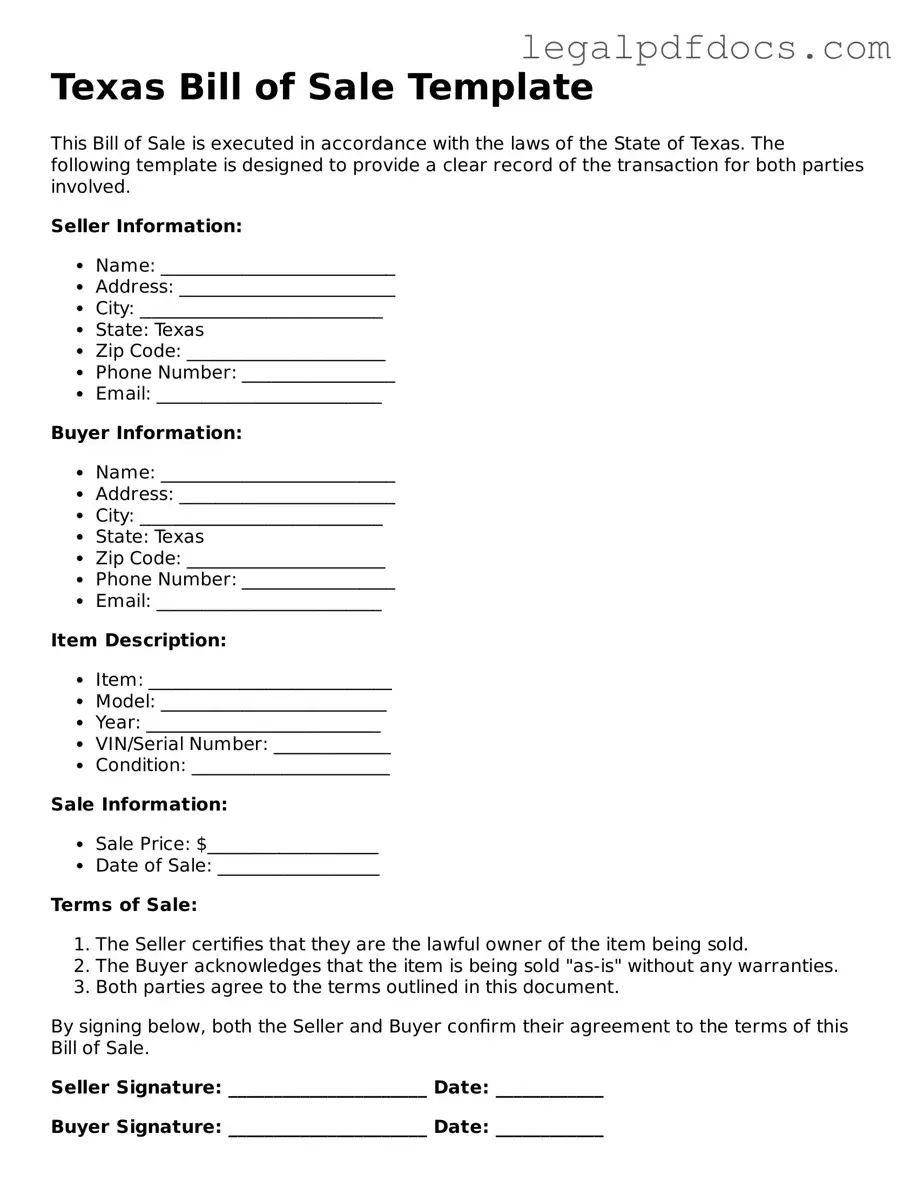Official Bill of Sale Form for Texas
The Texas Bill of Sale form is a legal document that serves as proof of the transfer of ownership of personal property from one party to another. This form outlines essential details such as the buyer's and seller's information, a description of the item being sold, and the sale price. Completing this form is crucial for ensuring a smooth transaction and protecting both parties involved.
Ready to fill out the Texas Bill of Sale form? Click the button below to get started!
Open Bill of Sale Editor Here
